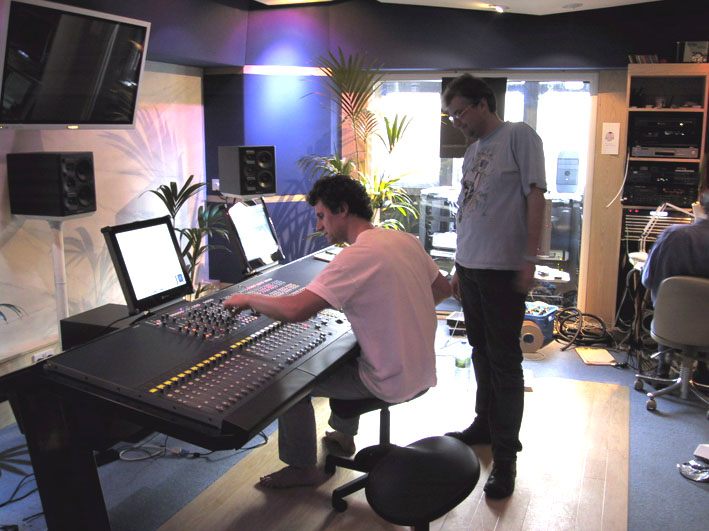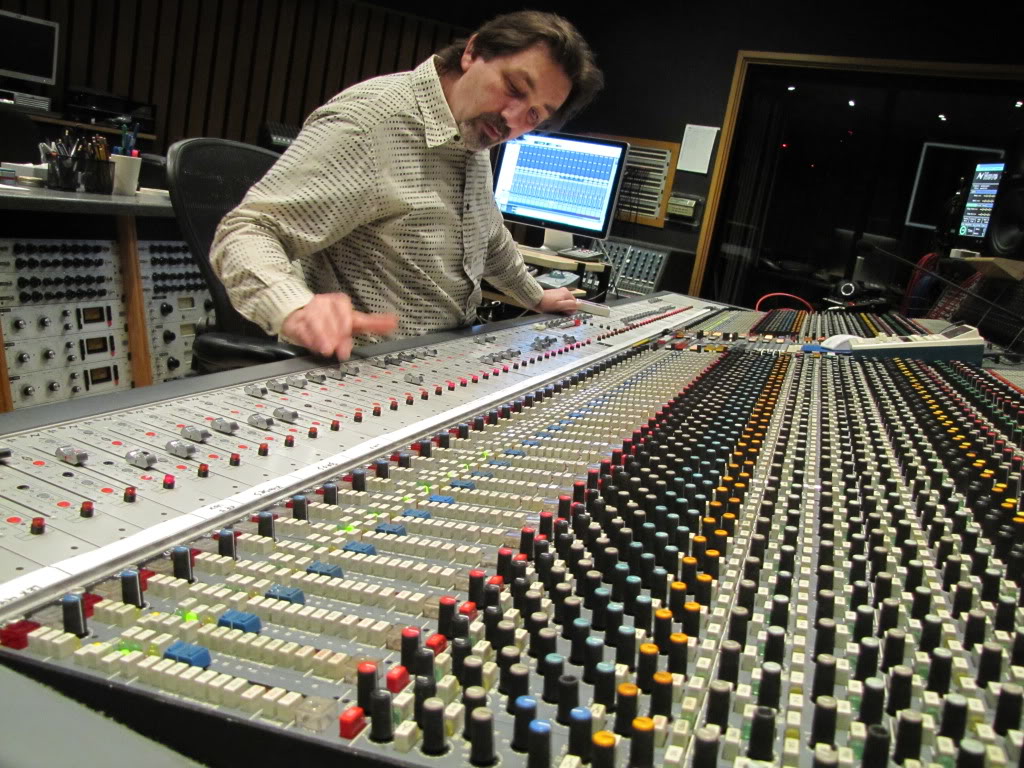Console interface design and… does that thing fly the Enterprise?
So, in answer to your question: yes that is a real thing. I helped design it. It’s manufactured here in Australia and called the ‘Smart Console’. No it does not fly the Enterprise – although we used to joke about how it felt like you were ‘flying through your mix’. Below is a little teaser for the thing…
[youtube=http://www.youtube.com/watch?v=sUgWg7sW0Qo&w=600&h=450]
This has come up in meetings a few times recently so I thought I would actually share some of the details of my past history in audio product design here.
In the 2000’s I worked for firstly for Fairlight, and then later SmartAV; two Australian companies making professional, state-of-the-art, digital sound-mixing consoles. And it was a blast. Fairlight have the incredible pedigree of basically changing the way we produce (and perceive – but that’s another story) music by inventing the sampler back in the 80s. The Fairlight Computer Music Instrument totally changed the way music could be manipulated and paved the way for much of electronic music today. When I worked for them though they had moved on from musical instruments and were producing dedicated post-production mixing and editing systems. And very, very good ones. As a product manager, I was thrust into the thick of things when I was made responsible for the ‘Dream’ console (now rebadged as ‘Evo’) as it launched into the market – and have many crazy stories about ‘bleeding-edge’ technology and the brave souls who breathe the rarified air of this high-pressure, demanding environment.
But whilst Fairlight really allowed me to cut my teeth on product design and the development process generally, it was later, at SmartAV that the interface finally leapt into the foreground.
Let me explain. In the analog age let’s say up until the 80s – big recording consoles could be enormous – many meters long – meaning that engineers sometimes had to move around considerable distances to grab the next knob they wanted. Whilst this was sometimes a disadvantage – the incredibly valuable byproduct of analog technology was that EVERY function had a dedicated knob or button and you ALWAYS knew exactly where it was.
 With the advent of digital consoles, knobs and buttons became multi-purpose (often one set of knobs had to be shifted to represent the channel you wanted to control – sometimes requiring multiple button presses to do so). And sometimes controls became multi-function – where a knob would control entirely different parameters depending on the mode of the system. Whilst this allowed enormous savings in space, cost, recallability etc… it represented a terrible loss for clarity of the interface.
With the advent of digital consoles, knobs and buttons became multi-purpose (often one set of knobs had to be shifted to represent the channel you wanted to control – sometimes requiring multiple button presses to do so). And sometimes controls became multi-function – where a knob would control entirely different parameters depending on the mode of the system. Whilst this allowed enormous savings in space, cost, recallability etc… it represented a terrible loss for clarity of the interface.
Digital consoles, to this day, are often bewildering and frustrating to use. Instead of sweeping your eyes across a line of knobs (as you would with an analog console) to check which Auxiliary send is up – now one must often go through menus, tap through pages and pages of displays and then grab some ‘soft-knob’ that a second ago was doing something completely different – and often with no tactile feedback of it’s ‘throw’ because it’s an infinite knob with no end-stop. Too many menus, not enough music.
And this problem was really the raison d’être of the Smart Console. (And yes – the big ones really do look like they’re from Star trek…) Originally conceived by a truly brilliant recording engineer, inventor and writer; Michael Stavrou, and then lovingly bought to life by us at SmartAV this machine was a radical reinvention of how we interact with large format audio.
We were really the first company to seriously quantify the mechanics of console use – and the empirical results of the efficiency improvements were staggering.
 I mean music mixing is a classic interface problem. It requires as close as possible to random access to potentially thousands, or even tens of thousands of controls. If an average channel strip consists of 80 parameters (6 bands of eq, 10 auxes, automation states, pans into multiple busses of varying widths, assign sections etc…) and you have a 90 channel mix – that’s 7,200 parameters. And Hollywood feature films nowadays talk about track counts of several hundred. And at the same time it’s a creative process. You want to leave the operator as much as possible cognitive resources to devote to the creative stuff as you do navigating the system.
I mean music mixing is a classic interface problem. It requires as close as possible to random access to potentially thousands, or even tens of thousands of controls. If an average channel strip consists of 80 parameters (6 bands of eq, 10 auxes, automation states, pans into multiple busses of varying widths, assign sections etc…) and you have a 90 channel mix – that’s 7,200 parameters. And Hollywood feature films nowadays talk about track counts of several hundred. And at the same time it’s a creative process. You want to leave the operator as much as possible cognitive resources to devote to the creative stuff as you do navigating the system.
 So without going into a detailed Spec of the smart Console – it was truly visionary on two levels. Firstly the manifested design. Simple, elegant innovations resulting in sometimes 100 fold increases in operator efficiency. Amazing. Really innovative technology too. Capacitive touch points, optical touch points, each panel running off embedded linux processors using a TCP backplane meaning you could pull out some faders and replace them with a different panel – without ever having to stop mixing… Secondly the use of empirical methods to actually assess operator efficiency. Whilst nowadays all console manufacturers bang on about the ‘ergonomics’ of their designs, at the time – it was really a dirty little industry secret – how poorly most consoles shaped up if you measured what mixing engineers had to actually do during a mix to use them.
So without going into a detailed Spec of the smart Console – it was truly visionary on two levels. Firstly the manifested design. Simple, elegant innovations resulting in sometimes 100 fold increases in operator efficiency. Amazing. Really innovative technology too. Capacitive touch points, optical touch points, each panel running off embedded linux processors using a TCP backplane meaning you could pull out some faders and replace them with a different panel – without ever having to stop mixing… Secondly the use of empirical methods to actually assess operator efficiency. Whilst nowadays all console manufacturers bang on about the ‘ergonomics’ of their designs, at the time – it was really a dirty little industry secret – how poorly most consoles shaped up if you measured what mixing engineers had to actually do during a mix to use them.
Taking on the international giants of large-format pro-audio mixing with a totally visionary console made right here in Australia – good times.





 Address: 11 Silva St, Tamarama, Sydney, Australia
Address: 11 Silva St, Tamarama, Sydney, Australia Phone: +61 2 (0) 404 214 889
Phone: +61 2 (0) 404 214 889 Email:
Email: 